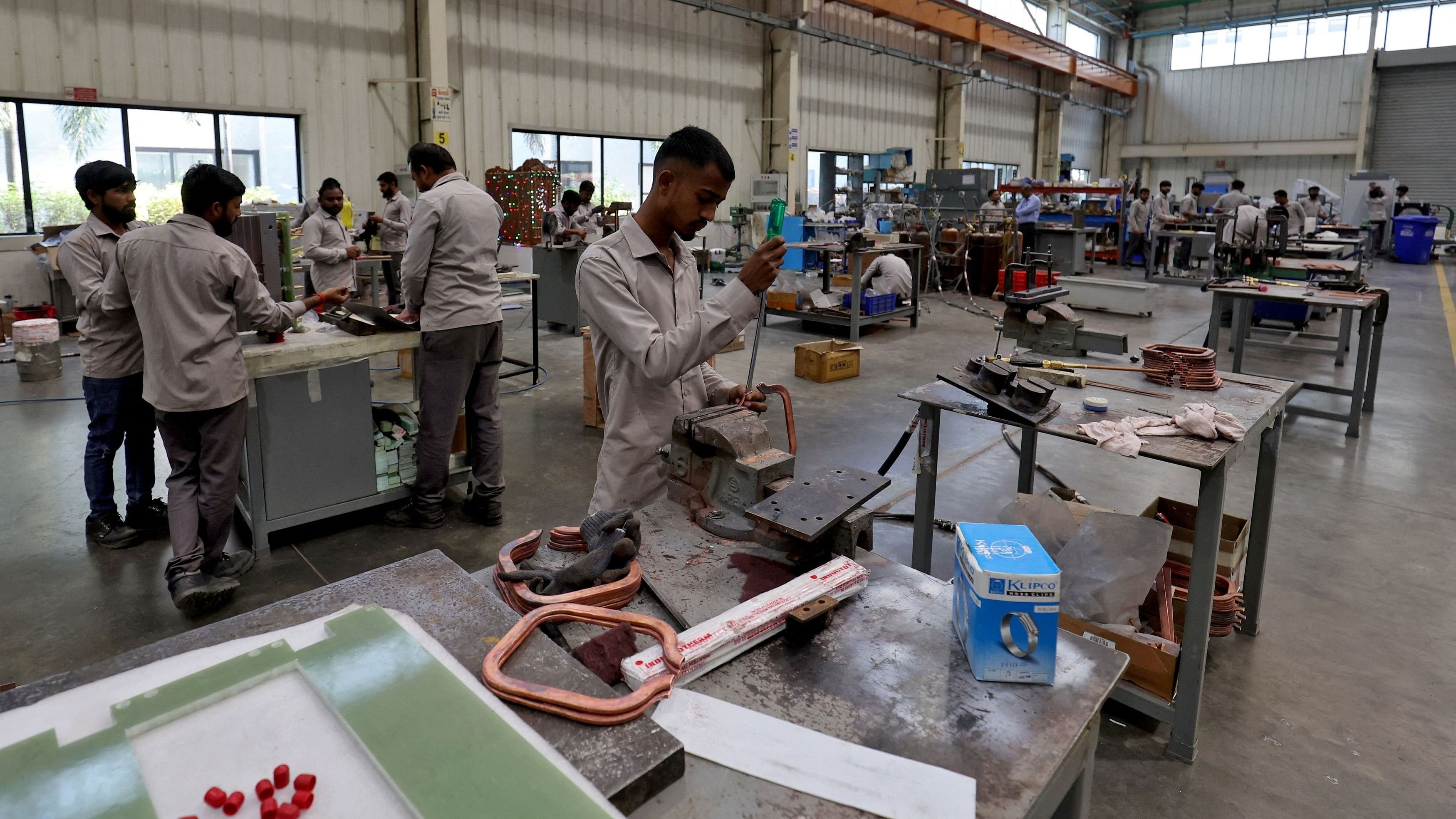
Employees assemble an electric transformer inside a manufacturing unit of Inductotherm (India) Private Limited at Sanand GIDC (Gujarat Industrial Development Corporation), on the outskirts of Ahmedabad, India, March 28, 2024.
Credit: Reuters File Photo
New Delhi: To realise the ambition of becoming a global electronics manufacturing hub, India must push for indigenous production of components like lithium-ion batteries, camera modules, displays and printed circuit boards (PCBs) by providing fiscal support and developing a domestic design ecosystem, an industry report showed.
In a report titled ‘Developing India as the Manufacturing Hub for Electronics Components and Sub-Assemblies’, the Confederation of Indian Industry (CII) suggested that the government should provide fiscal support for select components and sub-assemblies in the range of 6-8 per cent.
The industry body recommended that the fiscal support should be extended for a period of 6 to 8 years to ensure adequate time for scaling up and enhancement in value addition.
It also pitched for introduction of the second version of the Scheme for Promotion of Manufacturing of Electronic Components and Semiconductors (SPECS). “SPECS 2.0 to be introduced with a subsidy support ranging from 25 per cent to 40 per cent to support potential investors across brownfield and greenfield categories. The new policy should adopt a gradient approach with support towards the higher end of subsidy,” it said.
The SPECS scheme was introduced in 2020 to help offset the disability for domestic manufacturing of electronic components and semiconductors in order to strengthen the electronics manufacturing ecosystem in the country.
Under this scheme, the government provides financial incentive of 25% on capital expenditure for the identified list of electronic goods that comprise downstream value chain of electronic products like electronic components, semiconductor/ display fabrication units, ATMP (assembly, testing, marking, and packaging) units, specialised sub-assemblies and capital goods for manufacturing of these products.
In the report, the industry body noted that, in 2023, the demand for components and sub-assemblies stood at $45.5 billion to support $102 billion worth of electronics production in the country. This demand is expected to rise to $240 billion to support the $500 billion worth of electronics production by 2030.
The report encapsulates critical actions required to transition India’s electronics sector ecosystem from an ‘import dependent assembly led manufacturing’ to ‘component level value-added manufacturing’.
It has underlined 5 priority components/sub-assemblies of batteries (lithium-ion), camera modules, mechanicals (enclosures etc.), displays and PCBs which are categorised as high priority for India.
These components cumulatively accounted for 43% of the components demand in 2022 and are expected to grow to $51.6 billon by 2030.
These components have either a nominal production in India or are heavily import-dependent. “India can hardly afford to sustain this trend of importing the priority components,” CII noted in the report.
Printed circuit board assembly (PCBA) is a high-potential category for India since most of the demand is met by imports. This segment is expected to grow by 30%, leading to a demand creation of $87.46 billion by 2030.
However, manufacturing-related cost disabilities vis-à-vis other competing economies like China, Vietnam and Mexico (10-20%), lack of big domestic manufacturing corporations, lack of domestic design ecosystem for Indian companies and lack of raw materials ecosystem add to the challenges that disable the domestic manufacturing of components and sub-assemblies in India, the CII noted in the report.